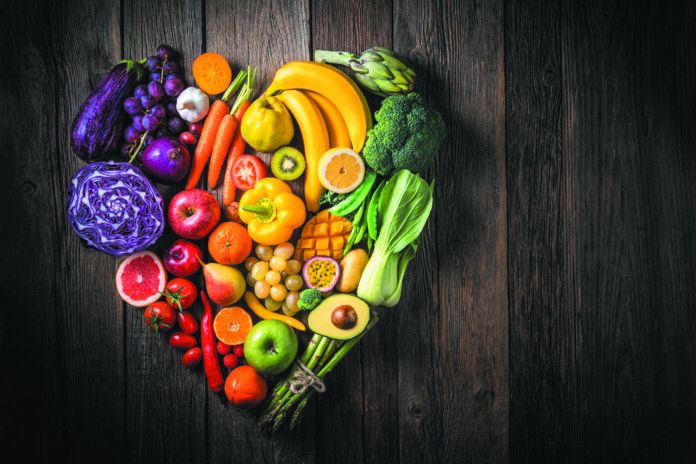A. Judith C. Thalheimer, RD, LDN, managing editor of Tufts Health & Nutrition Letter, answers: “Absolutely! A good rule of thumb is to go for a minimum of five servings a day. So, let’s break that down:
Serving 1—Breakfast: Breakfast is a great time to slip in some fruit. Quick, easy, and delicious, fruit has the natural sugars you need to refuel your body after the night’s fast, along with plenty of fiber and essential nutrients. One whole fruit, such as an apple, orange, or banana is one serving, and so is ½ cup of berries or grapes, ¼ of a cantaloupe, ½ a grapefruit, ½ cup canned peaches (in juice, not syrup), or ¼ cup dried fruit. (Veggies are fine, too, of course.) Pair with yogurt, nut butter, or nuts to make it a meal.
Servings 2 & 3—Lunch: Just one cup of leafy greens, a cup of vegetable soup, or two to four carrot or celery sticks is a serving of veggies. Have any of those with half a sandwich on whole grain bread or two to three ounces of a protein of your choice. Or, toss a half cup of cooked veggies (or more) with a cooked whole grain or whole wheat (or bean-based) pasta, add sauce or dressing, and eat hot or cold. Hummus and a load of veggies on a whole wheat wrap or pita is another quick lunch idea. Finish the meal with a serving of fruit (see “Breakfast” for serving sizes) or save the fruit to satisfy those late-afternoon munchies.
Servings 4 & 5—Dinner: Serve yourself a cup of cooked veggies with a lean protein and whole grain portion and you’ve met your five-serving goal for the day! Or make a stir fry with fresh or frozen veggies, a salad, or even four ounces of low-sodium vegetable juice plus half a cup of cooked veggies as part of your meal.
There are so many wonderful fruit and vegetable options, and they’re all good for you—
raw or cooked. For a well-rounded, nourishing, health-promoting diet, be sure to enjoy them with whole grains (or whole grain products), unsaturated fats, and lean proteins—whether you choose plant protein (like beans, lentils, or soy foods) or animal (like seafood, yogurt, or lean cuts of unprocessed poultry and meat, a small serving of cheese, or the occasional egg).
























